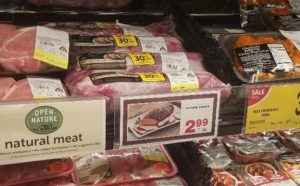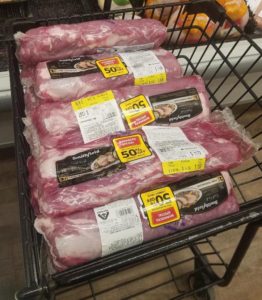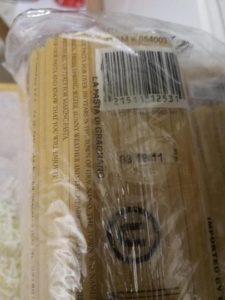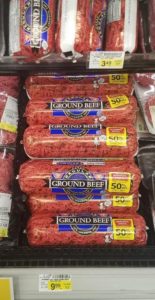I don’t mean to blow my own horn here (and, really, who amongst us is flexible enough for that anyway?) but sometimes I do like to brag…. thus:
So..I’m in Albertson’s and I do my usual patrol through the meat department. Sitting on the shelf are four pork whole tenderloins, marked down from $4.99/# to $2.99/#. Now, that’s all well and good, but Zero can do better. Those four (and keep in mind that number ‘four’) tenderloins are also marked down an additional 30%, knocking it’s per pound price down to about $2.09/#. Thats not bad for animal protein. But…Zero can do better.
 Me: “Hey, you’ve got these pork tenderloins marked down 30%. If you mark them down to 50% I’ll take ’em.”
Me: “Hey, you’ve got these pork tenderloins marked down 30%. If you mark them down to 50% I’ll take ’em.”
Him: “They’re already on sale at $2.99 from $4.99.”
Me: “I know, but Im the kinda guy who needs to feel like he’s really getting a deal, you know? Mark ’em down to 50% and I’ll take all of them.”
Him: “All of them?”
Me: “Sure. All of them.”
Here’s where the wheels flew off my grand plan. Remember that number four from earlier? Well, there were, in fact, four pork tenderloins sitting on the top shelf marked down to 30%. What I did not notice, were the other twenty packages sitting below it, also marked down to 30% off. And…I just committed myself to taking them all.
Uhm. Well.
 The happy ending is that in the final analysis I wound up paying $1.50/#. The more interesting part is I wound up with almost 60# of pork tenderloin. The really interesting part is that I had one hell of a time re-arranging the stuff in my already overloaded freezer to accommodate it. I literally cannot fit any more food in my freezer. And, yes, I’m thinking about purchasing another freezer.
The happy ending is that in the final analysis I wound up paying $1.50/#. The more interesting part is I wound up with almost 60# of pork tenderloin. The really interesting part is that I had one hell of a time re-arranging the stuff in my already overloaded freezer to accommodate it. I literally cannot fit any more food in my freezer. And, yes, I’m thinking about purchasing another freezer.
My normal procedure is to line a baking tray with foil, season one of these things with some sort of spice blend (Old Bay is actually rather nice), cook it up, slice it thin, and snack on it cold. But, lately I’ve noticed that glazing it with sweet chili sauce is actually pretty darn good.
Anyway, I think this counts as a pretty sweet score. I could literally stop buying meet for the next several months and be just fine. Oh, and mind you, there are two tenderloins in each of those packages. Yum.







